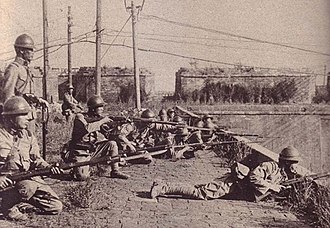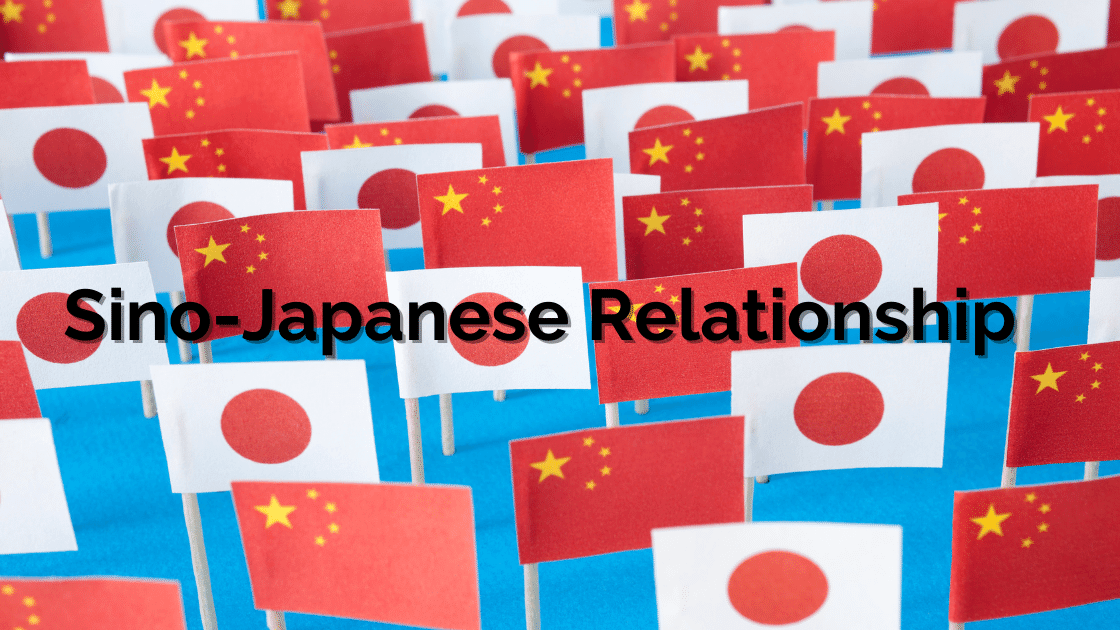History of Sino-Japanese Relations
Chapter 6 starts with the modernisation of Japan. The textbook then narrates Japan’s foreign relations with other countries, including China. There is a brief mention of how China was weak, but little else. Subsequently, we learn about the Japanese invasion of Manchuria and then the Second Sino-Japanese war.
This treatment of Chinese history, while probably sufficient for students to explain why Japan invaded China, does not give full justice. Hence, I want to provide some more information on Sino-Japanese relations. This will help explain why China was invaded (other than the obvious reason of proximity).
Traditional Sino-Japanese Relations
In Asia, China has always been a major power. It always had a big influence on the countries surrounding it and this influence has extended to Southeast Asia. This influence ranged from direct rule to cultural influence.
For example, Japan, Korea and Vietnam used Chinese characters in some form throughout their history. Southeast Asian nations also sent tributes to China in return for a ‘vassal state’ status.
Thus, one rather understated point regarding the Sino-Japanese relationship is Japan’s attempt to become the big brother in Asia after it became a modern power.
The Qing Dynasty and Sino-Japanese Relations
The period between the mid-1800s to 1911 was a terrible period for China. China was ruled by the Qing Dynasty, which was on its last legs, burdened by corruption and the inability to modernise.
After their humiliating loss to Britain in the First Opium War 1842, the Qing faced a major rebellion in The Taiping Rebellion (1850-64). At the same time, the Qing court was forced to give up concessions and territories to foreign countries.
During this time, China’s influence and power were in decline while Japan’s military power was on the ascendency. This was the context of the First Sino-Japanese War (1894-95) and explains why China was easily defeated by Japan.
Fall of the Qing Dynasty
In 1911, the Wuchang Uprising succeeded, and one by one, other provinces abandoned the Qing government. Even though Sun Yat-sen was declared nominal President, he did not have military power. Ultimately, a former general from the Qing government, Yuan Shikai became the new President of the new Republic of China.
When it was clear that Sun’s party, the Kuomingtang (KMT) won the 1912 elections, Yuan tried to depose Sun as Yuan wanted to rule China. It was another period of chaos as Yuan tried to consolidate his power.
The key development in Sino-Japanese relations was when Japan made their ‘21 Demands’ after they captured all German possessions. Again, it was clear that Japan took advantage of China’s weakness.
Yuan’s death in 1916 after a failed attempt to create a new imperial monarchy led to a 12-year period known as Warlordism where there was no central control and local generals ruled their own provinces.
Nanjing Decade (1927-37)

Sino-Japanese relations were relatively peaceful in the 1920s. In Japan, the Taisho government was operating under democratic norms and did not actively seek to expand its territories.
In China, Sun’s successor (Sun passed away in 1927), Chiang Kai Shek managed to unify most of China by defeating most of the warlords. He established the new capital in Nanjing. However, they were increasingly challenged by the Chinese Communist Party (CCP).
In 1926, the start of the Showa era meant the end of Japan’s experiment with democracy. The Japanese militarist began to view China with some alarm as it seemed that China seemed to be getting its act together.
The Japanese Kwangtung Army based in Manchuria took things into their hands when they unilaterally invaded Manchuria in 1931. Chiang was more concerned about the CCP and he did not put up any resistance to the Japanese.
Second Sino-Japanese War
In 1937, the Japanese started their full-scale invasion of China. Even though by this time, the KMT and the CCP were ‘allies’, they did not cooperate. In fact, the KMT and CCP sniped at each other till they eventually fell out.
Nevertheless, the Japanese did not manage to take full advantage of their lack of coordination. As their advance stalled, the Japanese started to turn their attention to other territories for more resources.
This led to the invasion of Vietnam in 1940 and the bombing of Pearl Harbour later.
Conclusion
As you can see, the reason why Japan targeted China was not just because of its proximity, but also because China was in turmoil at the end of the 20th century. This allowed the Japanese to win the First Sino-Japanese War and this weakness led to the ‘21 Demands’. At the same time, one of the underlying reasons was Japan’s desire to be the dominant power in Asia.
By the time of the Showa Emperor, the militarists were also concerned about China becoming stronger. At the same time, economic problems back in Japan led the Kwangtung Army to take matters into their own hands and start the Second Sino-Japanese War. I hope this provides a fuller picture of Sino-Japanese relations by giving more historical context, beyond the history textbook. You can read more about Sino-Japanese relations here.

Critical Thought English & Humanities is your best resource for English, English Literature, Social Studies, Geography and History.
My experience, proven methodology and unique blend of technology will help your child ace their exams.
If you have any questions, please contact us!







